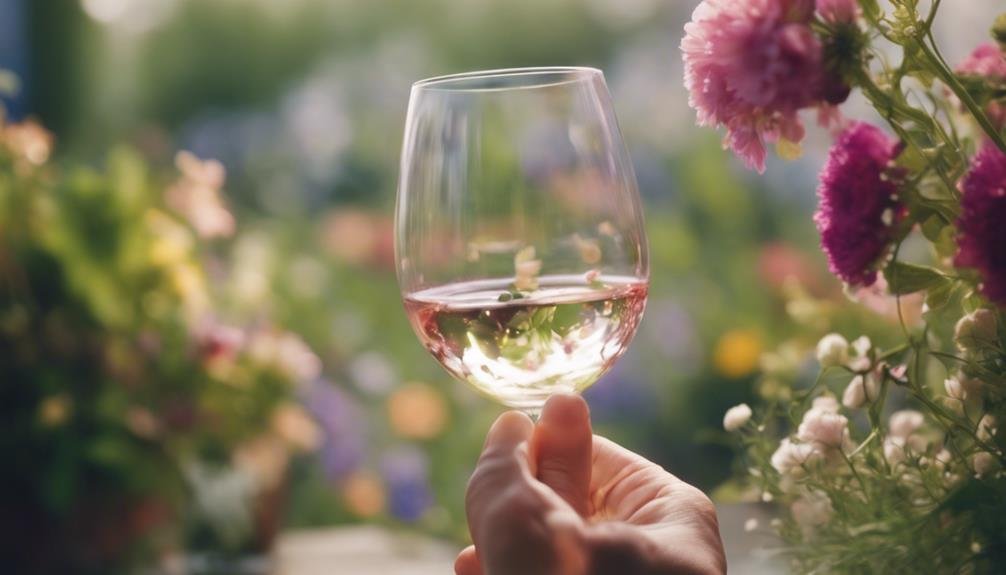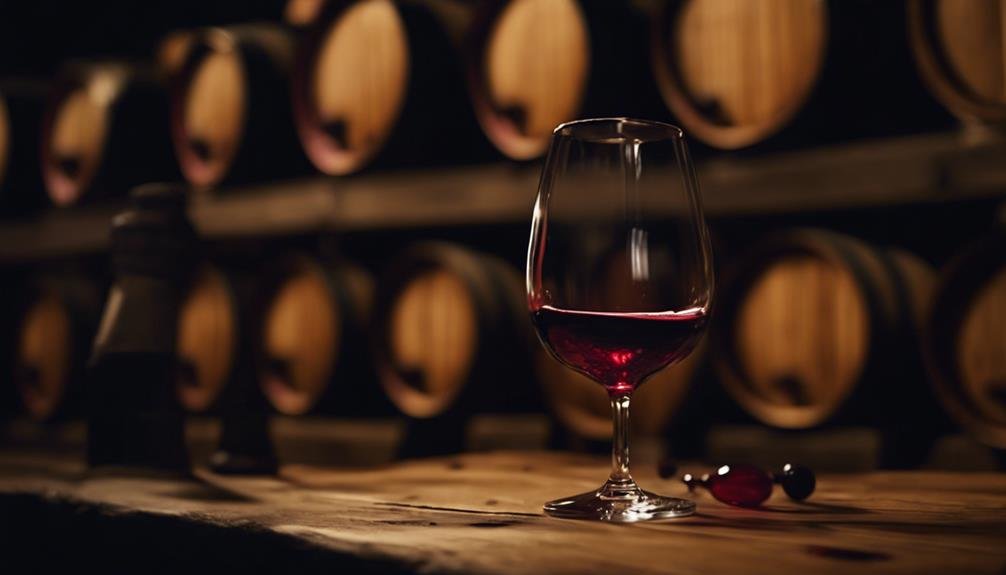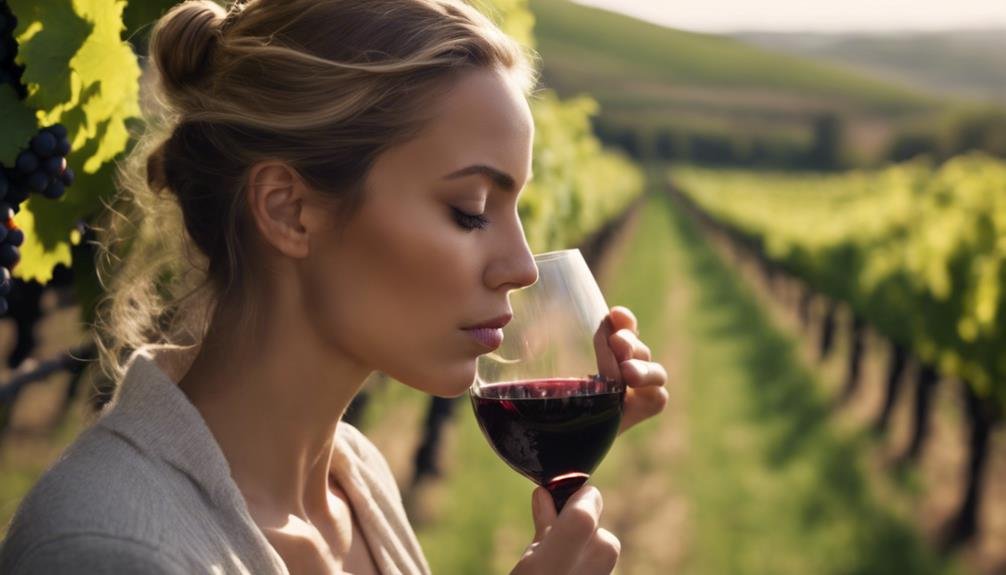Immerse yourself in the world of wine flavors to spark your mind. From essential aromas that refine your palate to the nuances of fruit flavors offering delightful contrasts. Explore floral scents and herbal hints, elevating your tasting experience with elegance. Uncover earthy and mineral notes, reflecting grape origins and unique terroir influences, enhancing your understanding. Learn how aging and oak infusions create a rich tapestry of flavors, from vanilla to hazelnut. Discover a sensory journey that not only tantalizes your taste buds but also stimulates your mind to appreciate the artistry of winemaking.
Understanding Wine Aromas
Understanding the intricate nuances of wine aromas is essential for developing a discerning palate and appreciation for the complexities of this beloved beverage. Aroma perception plays a crucial role in the sensory experience of wine tasting, allowing individuals to immerse themselves in a world of olfactory delights.
By focusing on the aromas present in a glass of wine, one can unravel layers of complexity that contribute to the overall tasting experience. Engaging with the various scents, from floral notes to earthy undertones, enhances the sensory journey and enriches the enjoyment of wine.
Sharpening one's ability to perceive and appreciate different aromas not only heightens the tasting experience but also deepens the understanding of the craftsmanship and artistry behind winemaking.
Exploring Fruit Flavors
Delving into the world of wine tasting, exploring the nuances of fruit flavors presents an enriching and sensory journey for discerning palates. When tasting wine, pay attention to the distinction between ripe and dried fruit notes.
Ripe fruits like berries and plums offer a juicy sweetness, contrasting with the concentrated, richer flavors of dried fruits such as figs and dates. Additionally, observe the interplay between sweet and tart fruit profiles in wines.
Sweet fruit flavors like peaches and cherries provide a delightful, sugary essence, while tart fruits like green apples and cranberries offer a revitalizing acidity. Understanding these fruit characteristics enhances the appreciation of the diverse flavors wine has to offer, enriching the tasting experience for enthusiasts and connoisseurs alike.
Unveiling Floral & Herbal Notes

Exploring the intricate world of wine aromas, one can uncover a symphony of floral and herbal notes that elevate the sensory experience of tasting fine wines. Floral bouquets and herbal infusions bring a touch of elegance and complexity to the wine's profile, reminiscent of strolling through aromatic gardens or savoring culinary delights.
Floral aromas like roses, elderflower, and violet can transport you to a blooming garden, while herb notes such as thyme, rosemary, and basil add a savory depth to the wine. These fragrant elements not only delight the senses but also offer a window into the wine's terroir and winemaking techniques, making each sip a journey through nature's beauty and the artistry of winemaking.
Delving Into Earthy & Mineral Aromas
Moving from the domain of floral and herbal notes, the exploration now shifts towards unraveling the intriguing world of earthy and mineral aromas in wines. When delving into earthy aromas, one encounters scents like wet clay pot and potting soil, yeasty notes reminiscent of beer and sourdough, and rustic aromas such as tanned leather and barnyard. These aromas often stem from the terroir characteristics of the vineyard, reflecting the soil influences on the grapes.
Additionally, wine enthusiasts may come across chemical-like aromas such as petroleum and new plastic, as well as mineral smells like wet gravel and volcanic rocks. Exploring terroir characteristics and analyzing soil influences can provide a deeper understanding of the unique aromas that grace our glasses.
Discovering Aging & Oak Influences

In the world of wine appreciation, understanding the influences of aging and oak on flavors is paramount for discerning enthusiasts. Exploring oak characteristics reveals notes of vanilla, clove, and cedar imparted by oak barrels during the aging process.
Aging effects on taste introduce complexities like hazelnut and chocolate, derived from oxidation over time. These flavors are a result of the fermentation and aging process, showcasing the intricate transformation of wine.
To enhance your wine tasting experience, consider utilizing tools like the Wine Folly Flavor Wheel to discern and appreciate the nuances brought about by aging and oak influences. Embrace the journey of discovering how time and oak contribute to the rich tapestry of flavors found in wines, elevating your understanding and enjoyment of each sip.
Frequently Asked Questions
Can Wine Flavors Change With Different Food Pairings?
Wine flavors can indeed change when paired with different foods due to interactions with taste buds. Food can enhance or diminish certain flavor profiles in wine, highlighting fruit, herbal, earthy notes, or altering perception of sweetness, acidity, and tannins.
How Do Storage Conditions Affect Wine Aromas?
Storage conditions greatly impact wine aromas. Temperature fluctuations can alter chemical reactions within the wine, affecting its aroma profile. High humidity levels can lead to mold growth, impacting the wine's scent. Ideal conditions maintain consistent temperatures and moderate humidity for best wine preservation.
Are There Seasonal Variations in Wine Flavors?
Seasonal influences play a significant role in wine flavor profiles, showcasing how climate impacts taste variations. From the crispness of a summer wine to the warmth of a winter vintage, each season brings unique characteristics to the palate.
Can the Same Grape Variety Produce Different Aromas?
Climate influence and grape diversity impact aromas produced by the same grape variety. Winemaking techniques like fermentation and barrel aging influence flavor extraction, contributing to varied aroma profiles. Understanding these factors enhances appreciation of wine complexity.
Do Wine Glasses Impact the Perception of Aromas?
Glass shape plays an essential role in aroma perception as it influences how the aromas are released and captured. The right shape can enhance the experience by directing the aromas towards the nose, while temperature affects aroma detection by impacting volatility.
Conclusion
To sum up, grasping wine flavors is like discovering a treasure trove of sensory experiences. Each aroma and taste is a piece of a complex puzzle, coming together to create a masterpiece in your glass.
Just as a painter uses different colors to craft a beautiful painting, winemakers use a variety of flavors to create a unique and delightful sensory journey for wine enthusiasts.
Cheers to exploring the intricate world of wine flavors!
